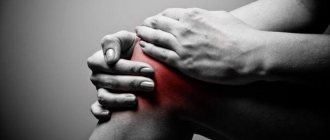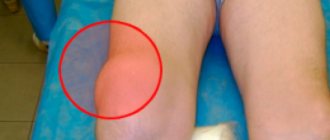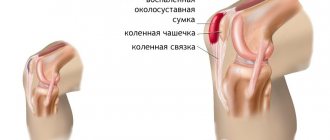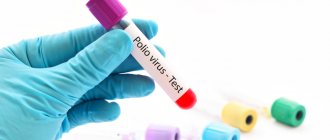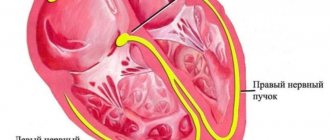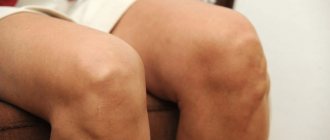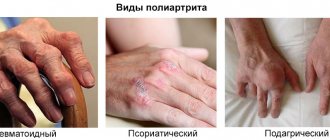Author of the article: Nivelichuk Taras, head of the department of anesthesiology and intensive care, work experience 8 years. Higher education in the specialty “General Medicine”.
Article publication date: 04/08/2016
Article updated date: 05/11/2020
Humeral periarthritis is an inflammatory disease of the tissues surrounding the shoulder joint: periosteum, tendons, joint capsule. At the same time, lime salts are deposited in them, and the joint itself is limited in movement due to pain. The disease develops in stages.
The disease greatly affects the quality of life: abduction or adduction of the arm becomes difficult and then impossible due to severe pain. The advanced form of the disease, in addition to moral and physical suffering, can lead to disability.
Seeing a doctor (neurologist, rheumatologist, vertebrologist) if symptoms of periarthritis appear will help save the joint and return you to a full life.
What are these symptoms, why does this disease develop and how is it treated - read about this further in the article.
Causes
In rheumatological and traumatological practice, it is periarthritis that becomes the most common cause of inflammation in the soft tissues of the shoulder girdle. It is diagnosed in every tenth patient who consults a doctor with complaints of muscle or joint pain. While the causes of periarthritis have long been discovered and classified, the pathogenesis has not yet been well studied. It is assumed that the impetus for inflammatory tissue damage is neurodystrophic changes in tendon fibers. The provoking factor in this case is one of the diseases of the cervical spine:
- osteochondrosis;
- spondylosis;
- displacement of intervertebral joints.
The pathological condition provokes pinching of the nerve fibers of the brachial plexus and circulatory disorders. A reflex spasm of blood vessels, dystrophic changes, and reactive aseptic inflammation of the tendon are also observed.
There is an opinion that the cause of the development of periarthritis is mechanical injuries to soft tissues that occur during extreme physical exertion or frequent monotonous movements. Inflammation can be caused by a fall with emphasis on an outstretched arm, a strong blow, a bruise, or prolonged compression. With micro- and macrotrauma, the integrity of the tendon fibers is disrupted, and the situation is aggravated by hemorrhage, rupture of the rotator cuff, swelling of the periarticular tissues, and disorders of the blood supply to the shoulder joint with oxygen and nutrients.
Periarthritis is often detected in patients with congenital features of the anatomical structure of the shoulder joint:
- weakness of the muscles that rotate the limb;
- violations of the alignment of the head of the bone.
The impetus for the development of the inflammatory process can be metabolic, neurotrophic, immune disorders, cerebrovascular accidents, and arthritis of the shoulder joint. Periarthritis is diagnosed after a myocardial infarction, with tuberculosis of the lungs, pathologies of the gastrointestinal tract, and numerous other diseases of the internal organs. Arthrosis of the shoulder joint is also identified as a prerequisite for the occurrence of periarthritis. ,
knee, hip, ankle joints.
Clinical picture
The leading symptom of periarthritis is shoulder pain. Its intensity depends on the stage of the pathology, the degree of inflammatory-degenerative damage to connective tissue structures. Periarthritis is characterized by the constant presence of painful sensations, the severity of which increases significantly with lifting heavy objects or increasing physical activity. The pain does not subside even at night and in the early morning hours. They become “gnawing”, aching, pressing, and radiate to the forearms. In the morning, a person feels sleep-deprived and exhausted. Periarthritis is often accompanied by pain in the cervical spine, regardless of whether osteochondrosis was the cause of its development.
The constant feeling of pain and the expectation of its intensification lead to a deterioration in psycho-emotional and physical condition. There are problems with falling asleep, neurological disorders, apathy, weakness, and fatigue appear. In an acute inflammatory process, the clinical picture is supplemented by symptoms of general intoxication of the body:
- body temperature rises to subfebrile levels (37-37.9°);
- headaches, dizziness, and dyspeptic disorders occur.
The disease may disappear without medical intervention after several months or years. But during its course, numerous complications develop that remain after recovery. One of them is contracture, or limitation of the range of passive and active movements. Often surgery is required to eliminate it.
| Form of periarthritis of the shoulder joint | Characteristic clinical manifestations |
| Simple | The patient complains of discomfort that occurs when performing certain, usually sudden, movements with the hand. Difficulties arise when touching the back, raising the arm up, or moving it strongly to the side |
| Acute | As the inflammatory process progresses, the intensity of the pain, radiating to the neck and forearms, increases. Swelling forms in the shoulder area, the skin over the joint turns red and becomes hot to the touch |
| Chronic | The severity of pain decreases, and stiffness increases. A person avoids sudden, jerky movements and suffers from aches and pains in the shoulder joint, especially at night. |
| Frozen shoulder syndrome | Any movements in the joint are limited due to dysfunction of the rotator cuff, the structures of which have undergone degenerative changes. It becomes impossible to perform ordinary movements, such as rotating the shoulder |
| Pseudoparalysis syndrome | Pseudoparalysis is characterized by partial or complete absence of movement in the shoulder joint as a result of damage to the rotator cuff and destabilization of the head of the humerus. Development of contracture |
Diagnostics
There are 3 doctors involved in the diagnosis and treatment of shoulder periarthritis: an orthopedist, a traumatologist and an arthrologist. If you suspect a pathology, you can visit any of them; if necessary, the doctor will give referrals to other specialists.
First, the doctor listens to the patient’s complaints, then conducts a visual examination of the affected area and palpation. He looks for limited joint mobility, swelling and severity of pain.
Further instrumental and laboratory diagnostics are carried out:
| Type of diagnosis | Description |
| General blood analysis | If the number of leukocytes in the blood is increased, this indicates the presence of an inflammatory process in the body. |
| Radiology | An image is taken in 3 projections for a more detailed examination of the joint; if necessary, a contrast agent is injected into the joint cavity. |
| Ultrasound | It is carried out to detect the inflammatory process in the muscles. Does not require special training. |
| Computed tomography (CT) or magnetic resonance imaging (MRI) | Allows you to take 3D images and assess the condition of the shoulder joint and nearby tissues and assess the stage of the disease; MRI is most often prescribed, but if it is contraindicated, CT is performed. |
| Arthroscopy | A minimally invasive surgical intervention, during which a special device, an arthroscope, is inserted into the joint cavity through a micro-incision and the condition of the joint is examined from the inside. Also during the study, a sample of the synovial membrane of the joint and nearby structures can be taken for microbiological diagnosis. |
Therapeutic tactics
A comprehensive approach to the treatment of periarthritis of the shoulder joint is practiced. The main goals of therapy are to eliminate pain, restore full range of motion, and prevent the spread of pathology to healthy areas of muscles, ligaments, tendons, and joint structures. Patients are advised to take a gentle regimen throughout therapy and use support bandages. In case of acute pathology, patients are recommended to wear orthoses, bandages with rigid inserts, and in some cases the shoulder is immobilized with a plaster splint. If periarthritis is caused by cervical osteochondrosis, then to prevent displacement of the vertebrae it is necessary to wear a Shants collar for several hours a day.
Classification of glenohumeral periarthritis
In medicine, glenohumeral periarthritis does not have an independent nosology, because there are many causes of dysfunction of the shoulder joint. According to the International Classification of Diseases, 10th revision, the following diseases can cause lesions of the shoulder joint:
- Adhesive capsulitis.
- Biceps tendonitis.
- Subacromial syndrome.
- Calcific tendinitis.
- Compartment syndrome and bursitis of the shoulder joint.
There are 3 forms of pathology: simple, acute, chronic. In rare cases, bilateral glenohumeral periarthritis has been observed.
Non-drug treatment
When diagnosing a simple form of periarthritis of the shoulder, pharmacological drugs are usually not prescribed. Patients are advised to avoid movements that unduly load the joint. And to consolidate the result and speed up recovery, physiotherapeutic measures are prescribed - UHF therapy, magnetic therapy, applications with bischofite, paraffin, ozokerite. Laser therapy, or the effect of optical radiation on periarticular tissues, the source of which is a laser, has proven itself well. After the procedure, blood circulation in the shoulder joint accelerates, nutrients and biologically active substances are supplied to damaged tissues, which significantly accelerates their regeneration. In orthopedic practice, hirudotherapy (treatment with the saliva of medicinal leeches) is also actively used.
Immediately after the pain and inflammation are relieved, the rehabilitation period begins. To restore lost mobility and eliminate contractures, 5-10 sessions of classic, acupressure, and, for weakened patients, cupping massage are prescribed. But the basis of the method of increasing the functional activity of the joint is therapeutic exercises for periarthritis. A set of exercises is compiled by a physical therapy doctor, taking into account the patient’s physical fitness. He conducts the first classes, controls the execution of movements, and suggests how to avoid excessive stress on the joints. The following exercises are most often included in the complex:
- slow, smooth raising and lowering of the shoulders;
- rotation of the shoulders first in one direction, then in the other direction;
- placing straight arms behind your back.
Movements should not be intense, since the goal of training is not to build muscle mass, but to improve blood circulation in the shoulder joint. You can’t exercise while overcoming pain. The occurrence of discomfort should be a signal for a long rest. Daily physical therapy exercises significantly shorten the rehabilitation period.
Set of exercises
Therapeutic exercises are one of the conditions for a speedy recovery. It’s good if you have the opportunity to do exercises in water. Swimming and hydrokinesitherapy are included in all recommended complexes for glenohumeral periarthritis. Exercising in the pool allows you not only to normalize muscle tone and relieve excess tension, but also to increase the range of motion in the damaged joint.
The main goals pursued by the gymnastics complex:
- Normalization of blood flow.
- Enrichment of tissues with oxygen.
- Elimination of stagnation.
- Strengthening muscles.
- Normalization of metabolic processes.
You should not start performing a gymnastic complex during the acute stage of the disease, with severe pain in the joint.
A few effective exercises to speed up your recovery:
- Your feet should be shoulder-width apart and your arms should be raised above your head. You should reach your fingertips towards the ceiling, but do not lift your feet off the floor. First stretch out both arms, and then each limb in turn.
- Your arms should be spread to the sides and left at shoulder level. Next, you should rotate your body and head, but keep your arms in their original position.
- Raise your hands above your head and grab your elbows. You need to slowly move your hand back without making sudden movements.
You should perform simple gymnastic exercises 3 times a day. This is the best prevention of relapse of the disease.
Pharmacological drugs
Drug treatment of periarthritis of the shoulder joint is to improve the patient’s well-being and prevent the spread of the inflammatory process to healthy tissue. To quickly relieve severe, piercing pain, the appearance of which is characteristic of the acute form of the pathology, drug blockades are carried out. Two groups of drugs are commonly used:
- anesthetics Novocaine, Lidocaine;
- glucocorticosteroids Diprospan, Flosteron, Kenalog, Hydrocortisone, Dexamethasone.
The best therapeutic effect is obtained by combining them with subsequent periarticular administration. Hormonal drugs are toxic to bone tissue and internal organs, therefore, if possible, they are replaced with non-steroidal anti-inflammatory drugs. NSAIDs in the form of injection solutions for intramuscular administration (Diclofenac, Ortofen, Ketorolac) are used to relieve acute pain and inflammation. Tablet forms (Nise, Ketorol, Nurofen, Celecoxib) are included in treatment regimens to eliminate pain of moderate intensity. And ointments and gels help get rid of mild discomfort - Voltaren, Fastum, Dolgit, Indomethacin, Artrosilene.
To resolve swelling, compresses with dimexide, medical bile, and magnesium sulfate are used.
Surgical intervention
If there is an imbalance between the rotator cuff and its stabilizing muscles, arthroscopic subacromial decompression is performed. The operation is performed to increase the gap between the acromioclavicular joint and the head of the humerus. As a result, sufficient space is created for the smooth sliding of the tendons located on the rotator cuff muscles. This also becomes a prevention of further injury to connective tissue structures during excessive physical activity. Main indications for surgery:
- persistent pain syndrome that was not eliminated by NSAIDs and periarticular administration of glucocorticosteroids;
- recurrent glenohumeral periarthritis lasting more than six months;
- the patient’s professional activity involves frequent active movements of the shoulder joint;
- tendon rupture leading to dysfunction of the periosteal muscle;
- transosseous injury to the rotator cuff tendon;
- The resulting complication of the pathology is tunnel syndrome.
During the operation, the acromial end of the clavicle is removed to a length of less than 1.5 cm. The freed space is gradually filled with connective tissue, which leads to the formation of a kind of false joint. Its main function is to bind the connective tissue structures of the joint during movement.
The surgery is performed using miniature arthroscopic instruments inserted through punctures in the soft tissue. A few hours after suturing, the patient is discharged for further recovery at home. But sometimes, for better visualization of the surgical field, it is necessary to perform subacromial decompression in an open manner. In such cases, the patient remains in the hospital under the supervision of medical personnel for several days.
Prevention
The main rule is to avoid increased stress on the shoulder joints in order to avoid injuries. Additionally, diseases of the spine can provoke the development of pathology, so at the first symptoms you need to undergo a comprehensive diagnosis. Before physical activity, you need to thoroughly warm up your muscles and ligaments, and also avoid increased stress and severe stretching of the shoulder girdle.
Doctors at the CELT clinic will individually select a course of treatment for glenohumeral periarthritis and help you return to your usual lifestyle!

